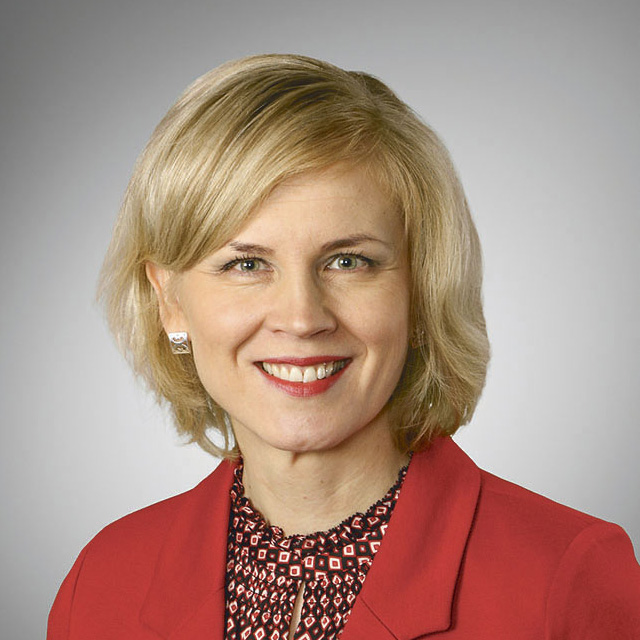In light of the statistics, the population of eastern Finland is aging and the number of employed people is decreasing. Are lights already being turned off in homes and businesses, and should we be concerned? Which snacks change direction?

During the last ten years, the population of the rest of Finland has grown by 110, Eastern Finland has shrunk by 000. The number of people employed in the region has decreased: the share is now about 50 percent of private sector employment in Finland.
Based on EK's reports, clearly more companies in the east than in the rest of Finland foresee a decrease in profitability. Even in EK's municipal ranking, the gap in the development of western and eastern Finland has grown.
We asked influencers familiar with eastern Finland how to take care of vitality and attractiveness.
"You always have to be a little worried"
"You always have to be a little worried, but it doesn't just concern Eastern Finland, but the whole of Finland. In addition to being worried, you have to know how to see the opportunities that can be found when you look properly", CEO of Kakkonen-Yhtiöt Oy, sales advisor Kösti Kakkonen Joensuus says. In his opinion, it is in everyone's interest that the whole of Finland remains inhabited.
"If Eastern Finland were to become deserted, the rest of Finland would have a lot to lose. The main ones I think about are safety and security of maintenance issues. We need to develop new energy, such as wind and solar energy, and ensure a functional and safe backbone network."
"We need a government policy that has continuity, edge and alignment across government periods." Kösti Kakkonen

From the board program, Kakkonen remembers the goal of a three-hour trip to the capital from all over Finland.
"Working connections are vital. Bottlenecks must be opened with state money and EU support and people and goods must be moved. Weakened air connections must be restored to the pre-corona level, double-track train traffic must be developed, roads must be kept in good condition, and freight traffic must be moved from rubber wheels to rails as well."
Special tax area for Eastern Finland now
Kyösti Kakkone has a vision of how to keep Eastern Finland at the forefront of development.
"The war in the neighborhood is punishing now, but let's look ahead - without envy and resentment. The ancient Romans already understood this: when things went badly somewhere in the empire, impressive support measures were targeted there."
Kakkonen would declare Eastern Finland a special tax area. It would mean significant business policy benefits and tax breaks for five years.
"This would have significant direct and even bigger indirect effects. We would get international companies, investments and capital to the region."
"We need a government policy that has continuity, edge and consistency across government periods. We also need a radical sense of reform and bold solutions instead of being served ridiculous tinkering projects that will not save the situation."
Huge responsibility for border security
Regional director of the South Karelia Association Fairy tale Sikanen sees a lot of opportunities in eastern Finland in various fields in 10–20 years. In industry, interesting prospects can be found with the green transition, for example, in the bio and circular economy, as well as in the fields of energy and environmental technology.
"The region has strong traditions in process industry and related expertise. We can produce solutions for industry that are cleaner than before, more energy and material efficient, and produce a higher processing value. Our vast natural resources are also in demand."
"The state cannot withdraw from responsibility in the maintenance and development of its national assets." Fairy tale Sikanen

Sikanen also brings up safety.
"Eastern Finland bears a huge responsibility for Finland's and Europe's border security, and manages it well. The cities, municipalities and provinces of the eastern border are used to seamless cooperation between authorities, which is an important starting point for preparedness."
"I also see opportunities in the service sector, even though tourism, especially in South Karelia, has taken a big hit since the Russian market closed. The Saimaa region is a pearl that can be polished into a diamond by developing services that draw from the region's nature and culture."
The state cannot withdraw from responsibility
In order for the opportunities to be realized, the infrastructure of eastern Finland must be brought to the same level as that of western Finland. The financing of regional development and support levels for business investments should also be on the same line.
Sikanen calls for investments in track capacity and the ability to relay rail traffic. Eastern Finland's number one rail project is a double track between Luumäki and Joutseno, but investments are also needed on the Karelia line and the Savo line.
"The state cannot withdraw from responsibility in the maintenance and development of its national assets. The EU's funding opportunities must be fully utilized. Finland's location and the long border with Russia favor, for example, getting EU funding tied to military mobility to eastern Finland."

Sikanen describes as important the principle alignment made in the framework crisis regarding the strengthening of Fingrid's core networks in eastern Finland.
"We are also waiting for solutions for the coordination of wind power and defense surveillance. If they are not included, at least solar energy projects should be implemented and the conditions for small nuclear power plants should be built. Clean and affordable electricity creates the basis for the development of the hydrogen economy."
Is there an attraction for hydrogen power in the East?
The coverage of the energy infrastructure is emerging as one of the issues of the fate of eastern Finland. In the spring of 2024, the gas transmission network company Gasgrid published a preliminary plan for the national hydrogen backbone network. The basis was a market survey mapping the transfer needs of hydrogen producers and users.
"The demand for hydrogen turned out to be huge. Industrial operators estimate the transfer need to be more than 80 terawatt hours per year. This is as much as the current annual electricity consumption of the whole of Finland", Gasgrid's manager responsible for hydrogen development Sara Kärki says.
But why, based on the market survey, is demand focused on the west and south?
"Now is the right moment to influence the future hydrogen network and the construction of a hydrogen-powered Finland." Sara Kärki

"So far, certain areas have been more active than others. The market survey is still open, and we hope for more answers to support the further stages of route planning throughout Finland. Now is the right moment to influence the future hydrogen network and the construction of a hydrogen-powered Finland", Kärki replies.
In June, the company organizes hydrogen network route discussions for municipal decision-makers and information on the hydrogen industry for companies. In autumn, the provinces will have numerous events about the possibilities of hydrogen at the local level.
Gasgrid develops hydrogen infrastructure according to society's needs. Regions and industrial actors are closely involved in the planning work of the national hydrogen network.
"There is currently some interest in the hydrogen economy in Eastern Finland. There is a lot of potential for solar energy and carbon dioxide that can be recovered from industry for the production of further products and value products for the hydrogen economy," says Kärki.
TEXT: SARI OKKO
The article has been published in the summer 2024 issue of Infra magazine.